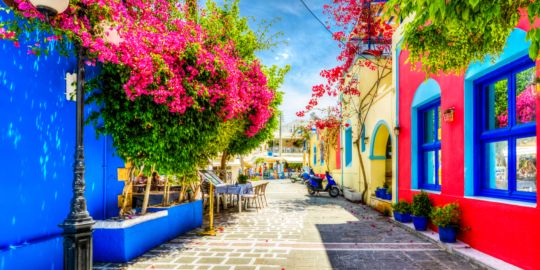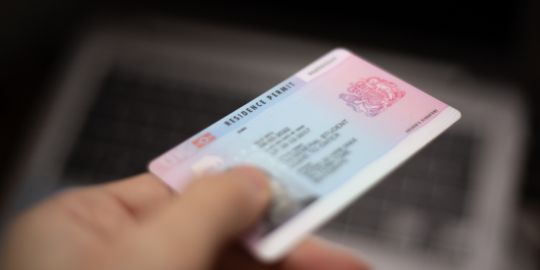A few words on legalizing illegal structures in Greece.
In an attempt to put a permanent end to illegal building and construction in Greece and also to
increase the state's income during these hard times the government passed a law allowing the
declaration of illegal buildings and their “legalization” for the next 30 years for a fine.
There has been a lot of interest in how and who should submit their property for “legalization”. I
have tried to put together some information related to the process and hope this comes in useful. I
would be happy to answer any further queries related to the implementation of this new law.
The deadline for submission has already been extended twice and is currently the 28th of February
2012.
What can be legalized according to this new law?
• New buildings or extensions to existing buildings that were built without a building permit.
• Buildings that exceed the dimensions of the permit they were built to. The excess can be
either or both in footprint or in height.
• Buildings that have been placed in the plot in ways not permitted or in different positions
than shown in the building permit, or at distances from the boundaries, roads or neighbors
that are less than allowed.
• Swimming pools that do not have a building permit.
• Balconies or roofed terraces that were closed off into living spaces
• Basement storage spaces converted into apartments.
• Closed parking spaces converted into apartments.
• Mezzanines and attics that were not originally in the building permit.
• Any kind of space that was not originally part of the allowance and has now been converted
into a living space.
• Pergolas, BBQs or other open structures or built elements such as boundary walls on
rooftops or in courtyards that are not shown on the building permit.
• Pergolas on roof tops that are legal but have been closed off to form apartments.
Under certain conditions it is also possible to legalize buildings built on land that does not comply
with the minimum restrictions of size or distance from roads etc. or was falsely shown larger than it
really is in order to get a building permit.
What cannot be legalized according to this new law?
• Buildings or structures built on public municipal or state property.
• Buildings that have been built on or too close to roads or streets and therefore pose a safety
hazard to transport.
• Buildings on forestry land, beaches, or too close to sea lines, or riverbeds.
• Buildings within protected areas ie. Archaeological sites, historical sites, traditional
UNESCO villages, NATURA areas, national parks etc.
• Listed buildings.
• Buildings that fall under extremely rare conditions that would be beyond the scope of this
article to explain in detail.
Why legalize?
• As of the 1st of January 2012 it will be impossible to sell, buy, rent or mortgage a property
that is in any way illegal and has not been submitted to this process. In order for this to be
implemented it has now become compulsory to include in any property related transaction a
certificate of legality issued by certified architects or engineers. In the case of false
declarations both property owners and architects are liable to big fines.
• The value of a declared illegal structure will increase since it can be treated as any other
legal structure and can be included in contracts and other documentation.
• The cost of legalization with this law is significantly lower than it was previously and the
procedure does not incur an annual fee for retaining an illegal structure as it would with
previous legislation.
• Connection with mains electricity and water is made possible where this was not possible
due to the illegal nature of the building.
• The procedure is handled by appointed architects or engineers and is submitted digitally
through the Technical Chamber and is therefore simple, straight forward and relatively fast.
• There is a 20% reduction on the fine if paid in full within eight months of submission or the
option of paying in 8 installments over the course of 24 months.
What is the procedure? The five steps of submission.
1. The owner appoints a certified architect or engineer who visits and assesses the property,
collects all necessary documentation*, completes the application form and estimates the fine.
2. Following acceptance of the fine by the owner the appointed architect submits the
application digitally and gets a unique application code and an invoice for the payment of the
application fee, as well as an approved initial fine depending on the chosen method of payment.
3. The owner pays the application fee directly to a bank of his choice and the payment is
automatically registered with the system. Following this stage a code is supplied to the owner
who can follow the procedure and make all subsequent payments when due.
4. Final drawings are made and full documentation is prepared and submitted by the architect
to the Technical Chamber on completion of its relevant system which is estimated to be
sometime in late March 2012. At this point a final fine is calculated and installments and
payments are finalized.
5. On approval by the Technical Chamber of the completed submission a certificate of
submission is issued for the property that is necessary for any legal transaction related to the
property.
How much will the application cost and how big is the fine?
• The application fee is 500 euros for a structure up to 50 sq. meters, 1000 euros for 50 – 100
sq. meters and it goes up from there.
• The architects or engineer's fees as recommended by the Technical Chamber are 1540 euros
plus VAT. Depending on the complicity of each case this is negotiable.
• The fine depends on the nature and size of the property as well as the set tax value of the
area the property is in.
I hope this is useful. I would be happy to answer any queries and to calculate basic fines for
whoever is interested, without any further commitment.
(moderated: no free ads please)
Legalisation of Buildings in Greece DEADLINE 28.02.12
The deadline has now been extended to 30 June 2012
Subscribe to this topic

Open a bank account that suits you
Discover the best international banks to manage your money securely.
"








